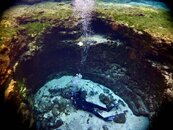Splint
Registered
Hi all,
I'm interested to hear people opinions on the general consumer trends relating to SLR and similar sized cameras in dive photography. Given the continuous improvements in compacts and phones is it reasonable to think that the larger style cameras may in general become much less popular over time? To put the question in perspective, I'm a mechanical engineer and I would eventually like to get into manufacturing camera housings. At this stage I'm in two minds as to whether I should primarily focus on phone housing which would appeal to a different consumer group or to focus on SLR and 4/3 and compact style.
I'm interested to hear people opinions on the general consumer trends relating to SLR and similar sized cameras in dive photography. Given the continuous improvements in compacts and phones is it reasonable to think that the larger style cameras may in general become much less popular over time? To put the question in perspective, I'm a mechanical engineer and I would eventually like to get into manufacturing camera housings. At this stage I'm in two minds as to whether I should primarily focus on phone housing which would appeal to a different consumer group or to focus on SLR and 4/3 and compact style.







